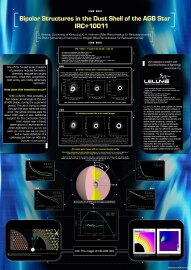
|
LELUYA at the Asymmetric Planetary Nebulae III Meeting
|
|
LELUYA at the Astrophysics of Dust meeting
|
LELUYA at SC2002
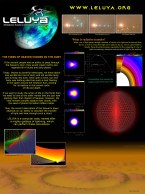
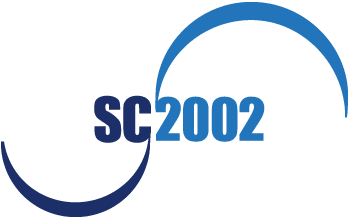
LELUYA is presented at
the SC2002 conference
(November 16-22, 2002)
by the exibitor Aggregate
(booth #R1659).
LELUYA is one of the users on the Linux supercomputer cluster KLAT2
designed by the Aggregate researchers.
Download the promo-poster of LELUYA:
Leluya-poster-SC2002.jpg
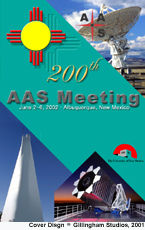 The first results from LELUYA will be presented during the
200th Meeting of the American Astronomical Society,
2-6 June 2002, Albuquerque, NM,
by Dejan Vinkovic
The first results from LELUYA will be presented during the
200th Meeting of the American Astronomical Society,
2-6 June 2002, Albuquerque, NM,
by Dejan Vinkovic
---------
Session 85. Stars: Disks, Shells and Variability
Oral, Thursday,
June 6, 2002,
2:00-3:30pm, Ballroom A
[85.04D]
LELUYA -- the First Exact General 2D Radiative Transfer Solver
Dejan Vinkovic, Moshe Elitzur (University of Kentucky)
Zeljko Ivezic (Princeton University)
ABSTRACT:
"Observations of objects deeply imbedded in dust cannot be studied without exact solution of the
multidimensional radiative transfer problem. LELUYA (www.leluya.org) is the first code capable
of solving exactly an arbitrary axially symmetric multi-grain dust distribution around a heating
source. A newly developed parallel algorithm automatically traces the dust density and optical
depth gradients, creating the optimal adaptive grid, which is highly unstructured and
triangular. Different grids are created this way for different wavelengths to accommodate the
spectral variation of dust opacity. The radiative transfer problem, including dust absorption,
emission and scattering, is solved exactly. Applications will be presented for two systems. CIT3
is an evolved star whose image seemed to require an unphysical binary system. I will show that
this is an artifact of certain 2D dust geometry around a single star, which includes a
non-spherical dust cavity. In young stellar objects, such as AB Aur, LELUYA provides the first
tool capable of exact handling of non-spherical geometries, crucial for understanding
configurations such as flared disks. "
A talk about LELUYA at the VLA
 Dejan Vinkovic will give a talk about LELUYA at the
Very Large Array observatory,
Socorro, New Mexico.
Dejan Vinkovic will give a talk about LELUYA at the
Very Large Array observatory,
Socorro, New Mexico.
noon, May 29, 2002
... visit also the poster presentation about disks and halos
Session 71. Stellar Youth: Tomorrow's Degenerates
[71.08]
Display, Thursday, June 6, 2002, 9:20am-4:00pm, SW Exhibit Hall
Disks and Halos in Pre-Main-Sequence Stars
Moshe Elitzur, Dejan Vinkovic (University of Kentucky)
Anatoly,S.Miroshnichenko (University of Toledo)
Zeljko Ivezic (Princeton University)
ABSTRACT:
"The flared disk geometry of Chiang & Goldreich (CG) (ApJ, 490, 368, 1997) is currently the
most popular model for the circumstellar dust distribution around pre-main-sequence stars.
However, imaging observations suggest that optically thin halos are present through most of the
pre-main-sequence phase. The halo provides additional heating of the disk, changes its
temperature profile, and dominates the IR excess. Ignoring the halo in the radiative transfer
models leads to erroneous interpretation of the dust properties and evolution.
So far, the only support for the CG model comes from its successful fitting of spectral energy
distributions (SED). However, we show that for every CG model there is a mathematically
equivalent disk+halo model with identical SED, therefore it is impossible to distinguish these
two geometries without imaging data. We show that in AB Aur, the best-studied Herbig Ae/Be star,
the CG-model is inconsistent with imaging observations. In contrast, the theoretical images from
a disk+halo model successfully explain the observed images which are large and circularly
symmetric at scattering wavelengths but small and elliptical at millimeter wavelengths. We
propose a simple test to derive directly from the observed images an objective level of
confidence in the applicability of the flared disk hypothesis. "
download the poster (1.1Mb)
 LELUYA and its first results were presented at the
LELUYA and its first results were presented at the
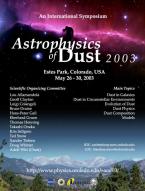 LELUYA and its first results were presented at the
LELUYA and its first results were presented at the
